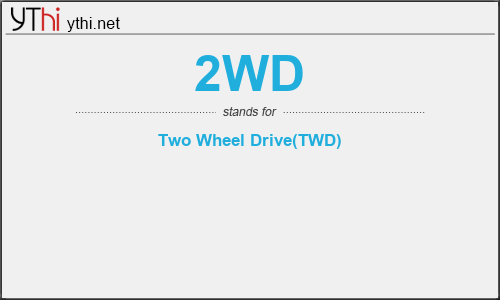What does 2WD mean? What is the full form of 2WD?
The full form of 2WD is Two Wheel Drive(TWD)
Two-wheel-drive (2WD) denotes vehicles with a drivetrain that allows two wheels to be driven, and receive power and torque from the engine, simultaneously.
Most passenger vehicles on the road today come standard with two-wheel drive (2WD), which means that the engine powers two of the vehicle’s wheels and the other two are allowed to spin. Since the engine only uses energy to move two wheels and doesn’t have to bear the weight of a hefty four- or all-wheel drive system, vehicles with 2WD are lighter overall, and lightening your load can help you save on fuel.
Vehicles with 2WD are either set up for front-wheel drive (FWD) or rear-wheel drive (RWD), meaning the power is intentionally directed to the front wheels or back wheels, depending on the setup. Let’s compare both systems.
Front-wheel drive
- The most common 2WD system for passenger vehicles on the road today
- Can reduce the vehicle’s total weight since there’s no heavy four- or all-wheel drive system to carry around
- Can make for lower vehicle production costs and better fuel economy since the engine only needs to power two wheels
- The weight of the transmission and engine is balanced directly on top of the front wheels, providing better traction than RWD when you’re climbing hills or driving on slippery roads; this helps prevent tire spinning on snowy and icy streets, too
Rear-wheel drive
- Found mostly on pickup trucks, sports cars, luxury cars, and older SUVs
- Known to provide a quicker initial acceleration because the weight is transferred to the back of the vehicle when you first hit the gas pedal, which increases your rear-wheel traction in dry conditions
- Vehicles with RWD tend to have more even weight distribution, improving the balance and overall performance
- More balanced weight makes it easier for two-wheel drive trucks to travel with an empty bed or lighter load
2WD
means
Two Wheel Drive(TWD)![]()
Translate Two Wheel Drive(TWD) to other language.


Leave a Reply
You must be logged in to post a comment.